
One of the most glaring problems with Madden for many years now has been the passivity of offensive receivers. They've been completely unwilling to make any effort to track the ball in the air and go up and get it. Often, underthrown balls would be easily intercepted because receivers would mindlessly run their route and never make an effort to come back towards the ball to catch it. This, combined with defensive backs who always had eyes in the backs of their heads, lead to a lot of interceptions and a very frustrating experience in the passing game. This year's Madden finally makes some effort to address this problem, and I honestly thought that this might finally be the year in which things started to really come together for this series. I wasn't expecting Madden 16 to suddenly be the NFL 2k5 of our generation, but I was at least expecting to see a product that felt more complete, in which all the areas of on-field action seemed - at the very least - to be competent.
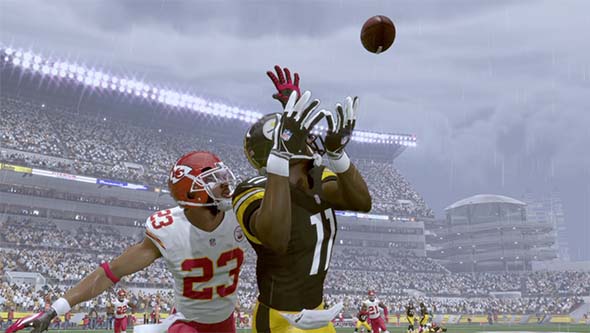
Long-standing problems with passing, catching, and pass defense were points of emphasis this year.
But as the summer went on, and all I ever heard about was some silly new "Draft Champions" mode that sounded like a half-assed fantasy football season, I really started to lose any hope and excitement that I had. Normally, I'd buy Madden used in order to keep my money out of EA's greedy hands. Fortunately for EA, the first two stores that I went to were sold out of Until Dawn, so I decided to go ahead and splurg on Madden so that I'd have something to do that weekend.
The mandatory tutorial featuring a hypothetical Super Bowl 50 rematch between the Steelers and Cardinals is an absolute train wreck. A handful of players recorded unbelievably cheesy dialogue for this sequence that seemed to imply that this year's Madden was going to put some emphasis on the personalities of the players and include some smack talk (the kind of thing that Madden '05's "Storylines" feature was going for). I thought it was weird that I hadn't heard anything about this in any of the promotional material or previews. It seemed uncharacteristic for Madden and contradictory to the NFL's careful regulation of the public image of the league.
The tutorial proceeded to force me through a series of intolerably-scripted plays and highlights of its fictitious Super Bowl in an attempt to clumsily introduce me to its new passing and catching mechanics. This tutorial is ugly to watch, painful to listen to, is terrible at teaching the new mechanics, and is blatantly unrepresentative of the actual game content.
I hadn't even finished the tutorial or made it to the game's main menu yet, and I was already suffering buyer's remorse.
Table of Contents

Historic players can be drafted.
Ultimate Team fantasy draft
My feelings of buyer's remorse only grew as I looked through the new features and menu options.
There seems to be a bigger and bigger push towards Madden being an elaborately-crafted system of fantasy football. I already thought that Ultimate Team was trending painfully in that direction. As silly as I think that feature is, Madden players seem to love it - so much so that EA has decided to add another fantasy football-inspired game mode: Draft Champions. As always, all EA's efforts seem to be in trying to make Madden as "game-y" as possible instead of making any efforts to emulate the deeper strategy and nuance of real football. Ultimate Team, and now Draft Champions, are the ultimate expression of that.
Draft Champions is a modified 15-round fantasy draft in which you select from one of three available players in each round. You start by selecting a coach, which grants you a specific offensive and defensive play style for you team, and so you want to try to get players that best fit into those schemes - if you're lucky enough to be offered any. In the final round, you also get to chose one of three Hall of Fame historical players, such as Randall Cunningham or Rod Woodson. Once the draft is done, you play a sudden-death "season" of three games. One loss, and you're done.
I complained about the rushed pacing of games in Madden 15, but the "games" in Draft Champions are only half that time! Three minutes in a quarter is not enough time to play football at all. The game even taunts you by forcing you to have to chose a coach and team style in the first round, and you'd have to be masochistic to chose anything other than "long pass" or "medium pass". Chosing "ground and pound" was barely viable with six minute quarter; it's virtually pointless with three minute quarters. A twelve minute game isn't long enough to establish any kind of "pounding" running game. All you have to do is listen to the commentary to hear how screwed up such a fast game is. Every game, the commentators talk about how it's been a "defensive battle" going into the two-minute warning or halftime - because one team had the ball for the entire half! It's nonsense!
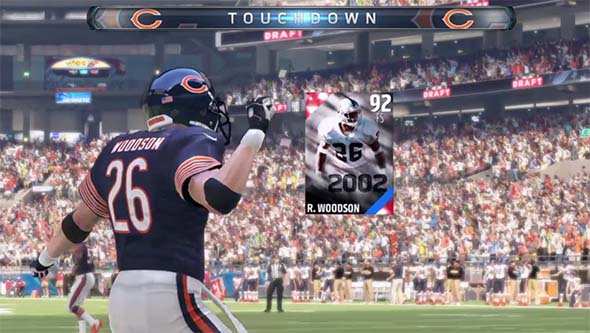
Draft Champions might be more worthwhile if you got to keep some of the players you drafted and add them to MUT.
I'll grant this to the game: the second two Draft Champion games are very tense. The short time time frame and insta-death nature of the mode means you have to play virtually perfectly. Of course, that's to be expected when you start the game in a four-minute drill.
And what do you get for your effort? What reward is worth this idiotic waste of time? You get some PSN trohies / XBox Live achievements, and some packs of Ultimate Team cards (most of which are just redeemable for points to buy other cards). You don't even get to keep the cards that you drafted in Champions mode - just random packs. Eventually, after you beat Draft Champions enough times, you get some elite MUT cards. Oooh... [hand waving] Why is Draft Champions even its own mode on the main menu? Why isn't it just an option in the MUT menu? It's basically just a fantasy draft and preseason for MUT, but you don't even get to keep the players! So what's the point?!
The question that I'm left with is: has Madden jumped the shark? Is this the point where I have to just give up on the idea that EA will ever want to pull Madden back to its simulation football roots? Has it so completely diverged from what I expect from an NFL-licensed football game that I just can't take it seriously anymore as an NFL-licensed football game? I'm tempted to just not even bother with the rest of this review if this is the kind of trash that EA is going to waste their time with. If EA thinks that this is the way of the future for football gaming, then I want no part of it.
But, for old times sake, I guess I can go over the actual football parts of the game, give it at least one more stab at being taken seriously, so click here to read the rest of the review... [More]
ac360be0-195e-4576-8ce9-1ac4ad0f6895|2|5.0
Tags:Madden NFL 16, Madden NFL, EA, EA Sports, Tiburon, sports, football, NFL, simulation, Ignite Engine, draft champions, ultimate team, fantasy football, connected careers, franchise, skills trainer, receivers, catching, passing, defensive back, preseason, PS4, Odell Beckham Jr.
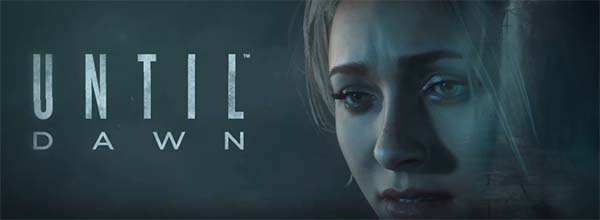
Here is a game that somehow managed to slip under the radar for me. As a snob for strong narrative-based games, I was surprised that a project like Until Dawn managed to escape my attention until a couple weeks prior to its release. Once I heard about it though, I was immediately intrigued. I knew it wasn't going to be a proper survival horror game, but it looked to have a lot of potential to move the horror genre (and gaming in general) in interesting directions. I was doubly surprised when I went to go by the game a couple days after its release so that I could play it over the weekend, only for it to be sold out in the two stores that I went to. It's the first time in about ten years that I've had trouble finding a game on store shelves within a week of its release, but I doubt that I'll have to break my long-standing boycott for pre-orders. So I had to resort to ordering it off of Amazon Prime with 2-day delivery and play it the next weekend.
Suspend your disbelief - and your common sense
Don't be fooled into thinking that Until Dawn is something other than what it is. It is an interactive movie with branching story. It is not an open-ended survival game! Anyone familiar with Heavy Rain or the Telltale Games will have a good idea of how the game will play out. The things you do and the actions and dialogue available are very tightly scripted. You won't be making decisions on how the group splits up, who goes where, or even what any individual character might be doing at any given time. Large chunks of the game are just dialogue and cutscenes, stopping you every now and then to let you make one of two choices, or showing a button prompt on screen to keep the action going (and sometimes keep the character alive). There are even some action sequences that could have been playable, but which are strictly non-interactive cutscenes.

How about lighting some friggin' candles instead of groping around in the dark?
The only time that the game opens up more is when you must explore rooms for clues or evidence. In these cases, you have complete control of character movement and can walk around mostly freely. But interactions are severely limited. You can only interact with the select few objects that the developers intended for you to interact with.
These limitations can be very frustrating because the game doesn't let you do some obvious, common sense things. Upon entering the lodge, I'd like to have been able to light the candles instead of having to wander around in the dark for the next few chapters. Later, when investigating something crashing through a window, I'd like to have been able to take the rifle I just found on the wall. And even later, after the rifle didn't have enough bullets to shoot the murderer, it would be nice to have been able to open up the revolver I just found to make sure that it's loaded and find out how many bullets are in the chamber. And the list of dumb oversights goes on...
Common sense precautions like taking a melee weapon or checking that your new gun is loaded are not possible.
These limitations are further exacerbated by the esoteric nature of some of the decisions. Since all decision are binary (usually consisting of a "helpful" / "safe" option or an "antagonistic" / "risky" option), it's often unclear exactly what the character will do, and the outcome often plays out in a non-interactive cutscene. The character may not say or do exactly what the option described, which might lead the player to think "that's not what I meant to do / say!", and sometimes a decision might railroad you into following through in a way that you don't want to.
Granted, the options need to be somewhat vague, and the consequences shouldn't be obvious. That would make the game too easy and dull. The game has to utilize some of the classic horror movie tropes in order for the narrative to work. After all, the characters don't have the foresight to know that they're in a horror movie game. I accept that there needs to be limitations on the precautions that the player can take, but the player also needs to feel like they have more agency. [More]
1eebd3c1-dc0a-4bc2-9d50-ae593ac587ec|4|2.8
Tags:Until Dawn, Supermassive Games, PlayStation, PS4, PSN, Sony, exclusive, horror, cabin, slasher, saw, consequences, narrative, drama, pre-order, Hayden Panettiere, Peter Stormare, Brett Dalton, Rami Malek, Galadriel Stineman, Noah Fleiss, Jordan Fisher, Nichole Bloom, Meaghan Martin, Ella Lentini

I recently wrote a post describing some unique abilities that I'd like to see for some of the common civilizations that are likely to appear in the eventual Sid Meier's Civilization VI. Most of the concepts were very vague, or they were based on the mechanics and features of Civ V, since we don't have any idea what the eventual feature set of Civ VI will be. So in this post, I'd like to expand upon that previous post by talking about some of the features and mechanics that I would like to see implemented in Civilization VI.
Most of these features age going to involve more complicated and advanced political and empire management mechanics. Civ V made a fundamental change to the structure of the series by introducing tactical combat on a hex-based grid. So it makes sense that unit movement and combat was the focus of that game, and the vanilla game played more like a tactical war board game played out over a larger scale. Empire management and simulation features were mostly absent or simplified. The expansions, then, focused more on the empire management mechanics that were absent from the vanilla game. Gods & Kings brought back a full religion mechanic and enhanced city state mechanics. And Brave New World added trade routes, ideologies, and completely rewrote the cultural victory condition.
So since Civ V already went down the "warfare first, empire-management second" design philosophy, I hope that Civ VI goes in the opposite direction. I hope that it puts more of its focus on being an "Empire Building Game" rather than a "Tactical War Game".
This post was featured in PolyCast episode 244: "Not just a lame clip show XVII". I encourage readers to listen in on the great feedback that was provided, and to contribute to the discussion.
... [More]
b9522e29-de40-4fdc-9478-43e47e3c0553|1|5.0
Tags:Sid Meier's Civilization, civilization, feature, wishlist, leaders, multiplayer, wonders, paleontology, climate change, colony, immigration, railroad, natural wonder, Civilization III, Civilization IV, Civilization V, Civilization VI
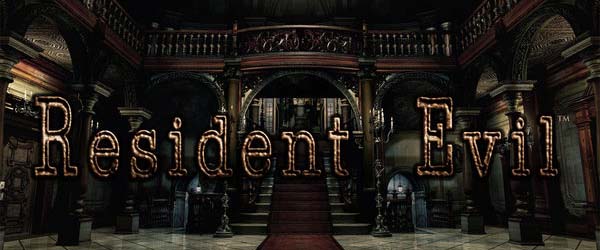
Not having a GameCube meant that I unfortunately missed out on some pretty high-quality games. Probably the most notable ones were Eternal Darkness and the remake of Resident Evil, neither of which, by itself, was enough to sell me on a console. I've since been able to play through a friend's copy of Eternal Darkness, and I had started on Resident Evil, but never got around to finishing it. When the HD remaster showed up on PSN, I was hesitant to buy it, since I knew that I could just play it on my friend's GameCube eventually.
Best of both worlds at the tip of your thumb
However, something in the previews really intrigued me. And that was the compromise that Capcom found for the never-ending conflict between the tank-style controls of the original PSX game and the analog control of newer games. Since I grew up with Resident Evil, Silent Hill, and other survival horror and similar adventure games, I've never had a problem with tank controls. They tend to be the lesser evil when dealing with static camera angles that change unpredictably (as in Resident Evil), and they are perfectly serviceable for behind-the-back or overhead cameras (as in the outdoor areas of Silent Hill). This ensures that the controls remain consistent during camera angle changes, since they are always relevant to the character rather than the camera.
But apparently, some people hate that control paradigm. They criticize it for making the characters feel too slow and lumbering, and that it lacks precision. The controls have oft been cited as one of the reasons for Resident Evil's declining popularity after Resident Evil 2, and supposedly ditching them was a major factor in the "renaissance" that was [supposedly] Resident Evil 4. But let me remind you that Resident Evil 4 had the exact same controls, and the character was just as slow and lumbering (if not moreso). The only difference was that the camera was moved to behind-the-back, and the gameplay switched to an action shooter rather than a more adventure-puzzle kind of game. So really, your problem was never with the controls...
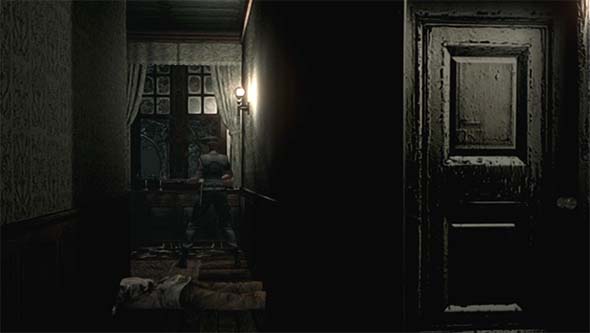
The original Resident Evil was criticized for how its controls and camera lead to frequent blind corners,
wasted ammunition, and cheap kills. The critics were right, but it wasn't game-breaking...
Regardless, analog control has its own baggage train of problems. Pressing the stick in one direction can cause the character to make sudden changes of direction if the camera suddenly changes. This can be mostly avoided by locking the character's movement as long as the player doesn't release or rotate the stick - and the HD Remaster does implement this. But this still leads to sudden turn-arounds when the player needs to move the character around a corner, since you sometimes have to move the stick to the exact opposite direction that you were pressing. And in cases in which the camera angle changes at the point where a change of direction is required to go around a corner or navigate an obstacle (which happens often), then the character can easily get lost in a cycle of spinning around between the two camera zones.
So there is no perfect solution to the problem of static cameras, but I tend to prefer the tank method due to its guarantee of consistency - even at the cost of some slow turning speeds. In any case, advocates of either paradigm should find exactly what they want in this remaster, since both configurations are implemented in the remastered game's default control scheme! Capcom's clever (and elegant) solution was to simply map the tank controls to the directional pad, while leaving the free analog movement on the analog stick. Players are, thus, free to alternate between whichever control they prefer without even having to go into a menu to change it. You can even alternate between them, on the fly, in the heat of the action if the situation warrants it, because I can definitely see how the analog movement could work well in some of the [rare] larger, open areas of the map (particularly for boss fights).
It's OK to hate these red-headed step-zombies
Most of the changes introduced in the GameCube remake serve to add further challenge. The most prominent display of this is the new "Crimson Head" zombie mechanic. If you kill a zombie and didn't manage to get lucky enough to blow its head off, you must burn its body in order to prevent it from resurrecting later in the game as a more dangerous "Crimson Head". These red-headed zombies are faster and more damaging than their precursor form. They can rapidly run across a room and grab you before you even realize they are there. They are also very well-tutorialized, since most players will probably encounter their first Crimson Head while attempting to retrieve the Armor Key from the hallway trapped with suits of armor on rails. The previous hallway includes a dead body that (if you didn't go out of your way to burn previously) will resurrect at this time. This hall has a system of mirrors in place that allow a tremendous degree of visibility from virtually every camera angle, meaning that whichever door you enter from, you'll have an opportunity to see the Crimson Head coming after you. It's a frantic and frightening moment!
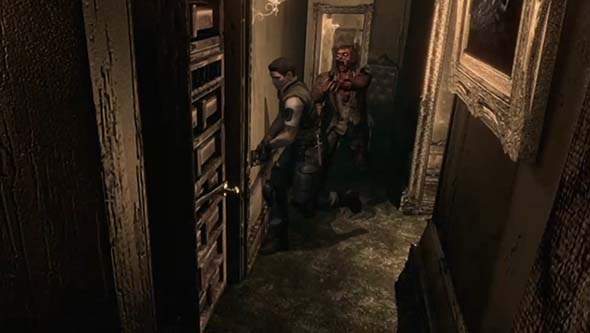
Bodies that you don't burn will resurrect as faster, more deadly "Crimson Heads"
that are difficult to avoid and require a second investment in resources to defeat.
Almost any zombie in the game can potentially turn into this more dangerous form. Destroying their head with a lucky shot or burning their bodies are the only ways to permanently ensure that they can't attack you... [More]
bedbfed9-e92f-45b6-b083-1b57db8977fc|1|5.0
Tags:Resident Evil, HD, remaster, remake, port, Capcom, survival horror, Jill Valentine, Chris Redfield, Albert Wesker, mansion, zombie, save, save system, tank controls, checkpoint, typewriter, ink ribbon, resource management, puzzle, logistics, GameCube, b-movie, Shinji Mikami
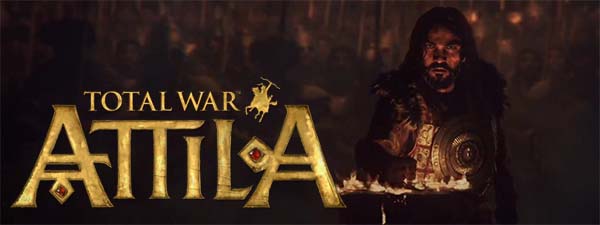
A few months ago, I posted an article outlining some suggestion for unique civilization themes and abilities for a possible Sid Meier's Civilization VI game. In it, I proposed a unique characteristic for the Huns or Mongolians: that they be a true nomadic empire. The idea was that they would have traveling cities that allowed them to move their empire with their army and essentially occupy any unclaimed territory or territory vacated by defeated rivals. Well, the Creative Assembly had already beaten me (and Firaxis) to the punch with Total War: Attila (and apparently Firaxis is embracing the idea with Beyond Earth's first expansion). Total War: Attila has a feature almost identical to what I had conceived for the Huns and Mongolians in Civilization. I'm a fan of the Total War series as is, so I was going to play this game for sure. Of course, Creative Assembly running with an idea that I had independently conceived of only made me more curious to play the game.
Attila acts as sort of a sequel to Rome II. While that game was all about building up the Roman empire (or whichever empire you happened to select), Attila is all about tearing down those empires. But this is a fully stand-alone game (like Napoleon Total War was to Empire Total War), and does not require Rome II in any way.
Learning how to be a horde
The Prologue campaign in this game is brutal! It's like a Demon's Souls tutorial that is designed to kick your ass. I restarted it once before realizing that it was designed for the player to fail in order to teach the new migration feature.
This prologue acts as a tutorial for the new features and mechanics of the game, but it doesn't do a particularly good job of teaching these mechanics. It also doesn't go into much detail of the established features of the franchise (other than telling you that a feature exists, then making you click on the button to do it), so new players might find themselves completely turned off by the fact that they are having their asses handed to them and aren't being taught much about how the game actually works, or - more importantly - why they are failing so hard. Perhaps having two separate tutorial campaigns would have been advisable: one to teach basic Total War concepts of empire and army management; and a second tutorial campaign for experienced Total War players that just teaches the migration features.
The brutal tutorial concludes with the challenging, climactic, historical battle of Adrianople,
in which your Visigoths must hold off Emperor Valens' superior army until your cavalry arrives.
Playing as migratory hordes minimizes city management, but you do still have to develop infrastructure for your nomadic armies. Rebuilding conquered cities and defending your borders, however, is not an issue - which was always the most tedious part of the game anyway. You don't need defensive armies in your territory and are free to focus all your efforts on your eventual goal. This change works well with the requirement that all armies must be attached to generals, and is a big step up from Rome II. There were large chunks of Rome II's campaign in which I felt like I couldn't do anything because I had to camp out my armies in cities in order to replenish and improve public order. Since I was at the army cap, the campaign would stagnate because I couldn't build new armies in order to watch over my newly-conquered settlements while also pressing forward with my primary armies... [More]
da530405-0213-4b1a-93c4-503924d797fd|0|.0
Tags:Total War, Total War: Attila, Creative Assembly, Sega, PC, Steam, Attila, Attila the Hun, Huns, Rome, Western Roman Empire, Eastern Roman Empire, Constantinople, Byzantine Empire, Sassanid Empire, Europe, Goths, Visigoths, Ostragoths, Germanic tribes, Franks, Saxons, Vandals, strategy, turn-based strategy, real-time strategy, grand strategy, history, campaign, horde, migration, climate change, the Great Migration, steppe, Sid Meier's Civilization, war, nomad, siege
|

| 12 | | | | | | | 60 | | 11 | | | | | | | 55 | | 10 | | | | | | | 50 | | 09 | | | | | | | 45 | | 08 | | | | | | | 40 | | 07 | | | | | | | 35 | | 06 | | | | | | | 30 | | 05 | | | | | | | 25 | | 04 | | | | | | | 20 | | 03 | | | | | | | 15 | | 02 | | | | | | | 10 | | 01 | | | | | | | 05 |
|